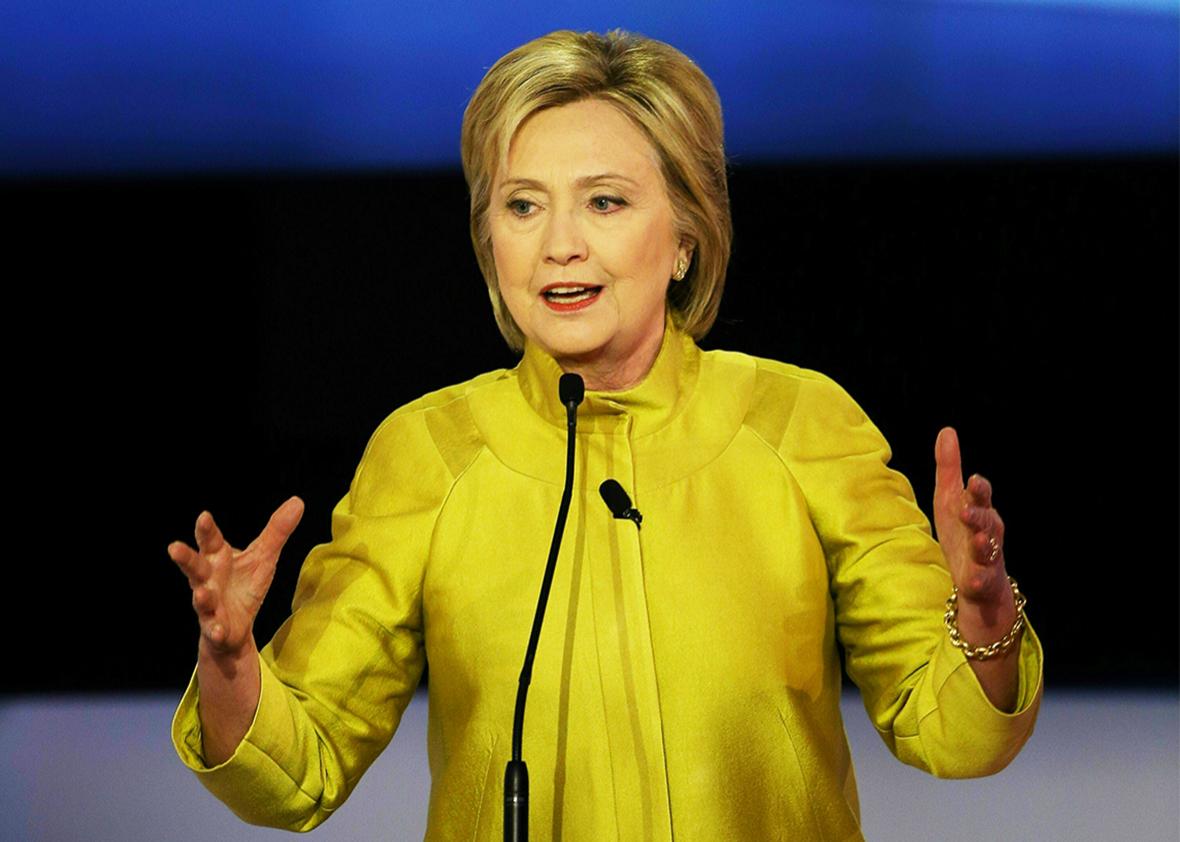The Hillary Clinton campaign finally has New Hampshire and its easily duped white people in the rearview and can now move on to states that actually look more like the contemporary Democratic coalition. Onward to Nevada and South Carolina, where there exist nonwhite humans who may be less prone to daft revolutionary schemes.
One quick hiccup to the plan, though: What if Clinton loses the Nevada caucuses, too?
She shouldn’t. She has courted the state’s powerful labor unions (though its Local 226, which represents much of the Las Vegas Strip, is remaining neutral), which are extremely well-organized. She has the secretary of labor himself, Tom Perez, campaigning for her in the state. Her organization was in the state well before Sanders’ was, and its reach extends to towns far beyond the two hubs of Las Vegas and Reno. And yes, Nevada is not a 90-some percentage white state, as the first two delegate-awarding states were, and Clinton performs best among the party’s black and Latino base. Nevada is 76 percent white, according to the census, and only 52 percente non-Hispanic white. New Hampshire, by contrast, is 91 percent non-Hispanic white.
The 76 percent white figure is one that, if you felt like it, could be rounded up to 80 percent for shorthand. This is what Clinton campaign spokesman Brian Fallon appears to have done this week—or at least this is the most generous explanation we can conceive for why he started dropping the “80 percent” figure around. (He would not respond to a request for comment about where he got that figure.) “There’s an important Hispanic element to the Democratic caucus in Nevada. But it’s still a state that is 80 percent white voters,” he told MSNBC’s Chuck Todd on Tuesday.
Is it now? In the 2008 presidential general election, 69 percent of voters were white. In the 2012 general, that figure was down to 64 percent. Already, we’re far away from 80 percent. Now let’s consider what the voting breakdown is like in Nevada’s Democratic caucuses. The 2008 entrance polls for its caucuses were 65 percent white, 15 percent Latino, 15 percent black, and 3 percent Asian. And Nevada, like most of the country, hasn’t gotten any whiter in the past 8 years.
So why the dickens would he say incorrectly that Nevada’s voters are 80 percent white in a state that’s sparsely polled but when it is polled shows her well into the clear? This has been considered her “Western firewall” for some time. Is it still?
It could be that the Clinton team does still expect to win Nevada but is trying to portray it as an open contest so it can pretend to be shocked when it wins and ride a “comeback” narrative from there. (Politics is so stupid.) Or the Clinton team is lowering expectations—eh, it’s just a bunch of silly white people out there in Nevada, you know how they can be—because it really does see in its internal polling a close contest.
We will presumably see more polling data coming out of Nevada soon. As with most caucus states, the polling can be inaccurate because of the convoluted process in which organization is so critical.
One recent poll we do have, that I’m going to write about with some extreme caveats, does indeed show a Clinton-Sanders tie in Nevada at 45 percent apiece. Now look: It was commissioned by the Washington Free Beacon, a conservative publication that exists largely to terrorize Hillary Clinton. The poll was conducted by TargetPoint Consulting, a conservative firm stocked with Republican operatives whose clients in 2012 included Mitt Romney’s presidential campaign, Mitt Romney’s super PAC, and Karl Rove’s super PAC. This is either a solid poll or it’s a well-conducted effort to stoke the “Clinton in disarray!” narrative swirling around the Clinton campaign following New Hampshire. We will know more soon.
But it wouldn’t be surprising if this firewall is crumbling, or whatever it is that firewalls do when they stop being firewalls. Clinton’s campaign also has been spending this week trying to turn the public’s attention toward the March contests. “Whereas the electorates in Iowa and New Hampshire are largely rural/suburban and predominantly white,” Clinton campaign manager Robby Mook wrote in a staff memo “obtained” by PBS the day of the New Hampshire primary, “the March states better reflect the true diversity of the Democratic Party and the nation—including large populations of voters who live in big cities and small towns, and voters with a much broader range of races and religions.” The delegate-rich states Mook lays out as key to the nomination include “Texas, Georgia, Alabama, Illinois, and Florida.” He’s absolutely correct. But if Sanders starts eating well into her lead among black and Latino voters—something we’d hardly bet on but can’t rule out—we’ll soon be hearing about how Texas, Georgia, Alabama, Illinois, and Florida, too, are just the home states of Whitey McWhitesalot, and the true test for the nomination will be in June’s California primary or on the convention floor.
